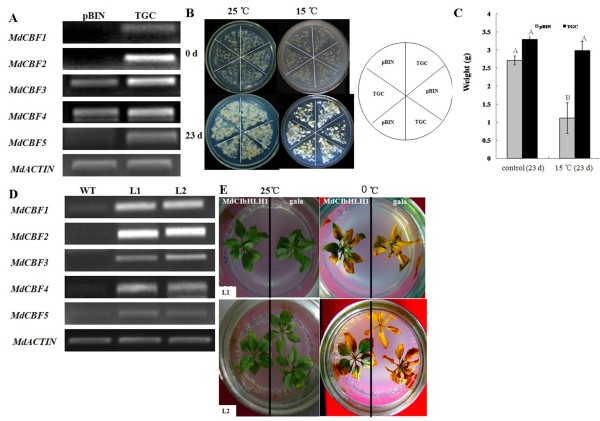Figure 5.
Stress tolerance assay of MdCIbHLH1 in transgenic apple. (A) Semi-quantitative RT-PCR analysis of MdCIbHLH1, MdCBF1, MdCBF2, MdCBF3, MdCBF4 and MdCBF5 in transgenic apple calluses containing either an empty vector (pBIN) or the MdCIbHLH1 gene (TGC). Differences in the starting quantity of template were normalized using MdACTIN expression. (B) Photographs of transgenic calluses under stress conditions. The upper panels represent calluses prior to stress analysis. The lower panels show calluses grown at 15°C for an additional 23 days. The cycle on the right is a sketch of callus distribution in a plate. (C) The weight increment of calluses that underwent stress treatment, shown in (B). Error bars indicate the standard errors from three independent experiments. (D) Semi-quantitative RT-PCR analysis of MdCIbHLH1, MdCIbHLH1, MdCBF1, MdCBF2, MdCBF3, MdCBF4 and MdCBF5 in transgenic and non-transgenic apple tissue culture seedlings. Differences in the starting quantity of template were corrected by normalizing to MdACTIN expression. (E) Plants of WT, L1 and L2 apple tissue culture seedlings were subjected to 0°C for 7 days and then grown for an additional 7 days under normal growth conditions. WT, wild type; L1 and L2, transgenic apple lines. Values indicated by the capital letters are not significant at p < 0.01, respectively, according to the Duncan's Multiple Range Test.

